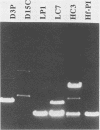Abstract
Plasmid characterization studies were conducted on a Salmonella typhimurium strain isolated from pasteurized milk and from a symptomatic patient during the 1985 Illinois salmonellosis outbreak. This strain (Hf) was reported to possess an unusual plasmid profile which distinguished it from all Salmonella strains isolated in the United States prior to 1984. Antibiotic susceptibility testing revealed that the strain was resistant to tetracycline, erythromycin, clindamycin, sulfisoxazole, sulfadiazene, triple sulfa, cefoperazone, streptomycin, mezlocillin, piperacillin, carbenicillin, penicillin, ampicillin, and kanamycin. Plasmid analysis revealed that the strain possessed four plasmids with sizes of approximately 158, 98, 10.2, and 6.0 kilobase pairs (kb). Successive transfer at 43 degrees C led to increased antibiotic sensitivity in 75.5% of the isolates screened. Electroporation and calcium chloride treatment were each used to transform plasmid-free Escherichia coli strains with the plasmid pool from S. typhimurium Hf. Plasmids introduced by transformation ranged in size from 4.4 to 23.2 kb and correlated with resistance to penicillin G, ampicillin, carbenicillin, cephalothin, cefoperazone, cefamandole, mezlocillin, piperacillin, and in some cases, tetracycline and kanamycin. DNA-DNA hybridization experiments localized these resistance genes to a highly duplicated 6.3-kb fragment of the total EcoRI restriction digest of the S. typhimurium Hf plasmid pool.
Full text
PDF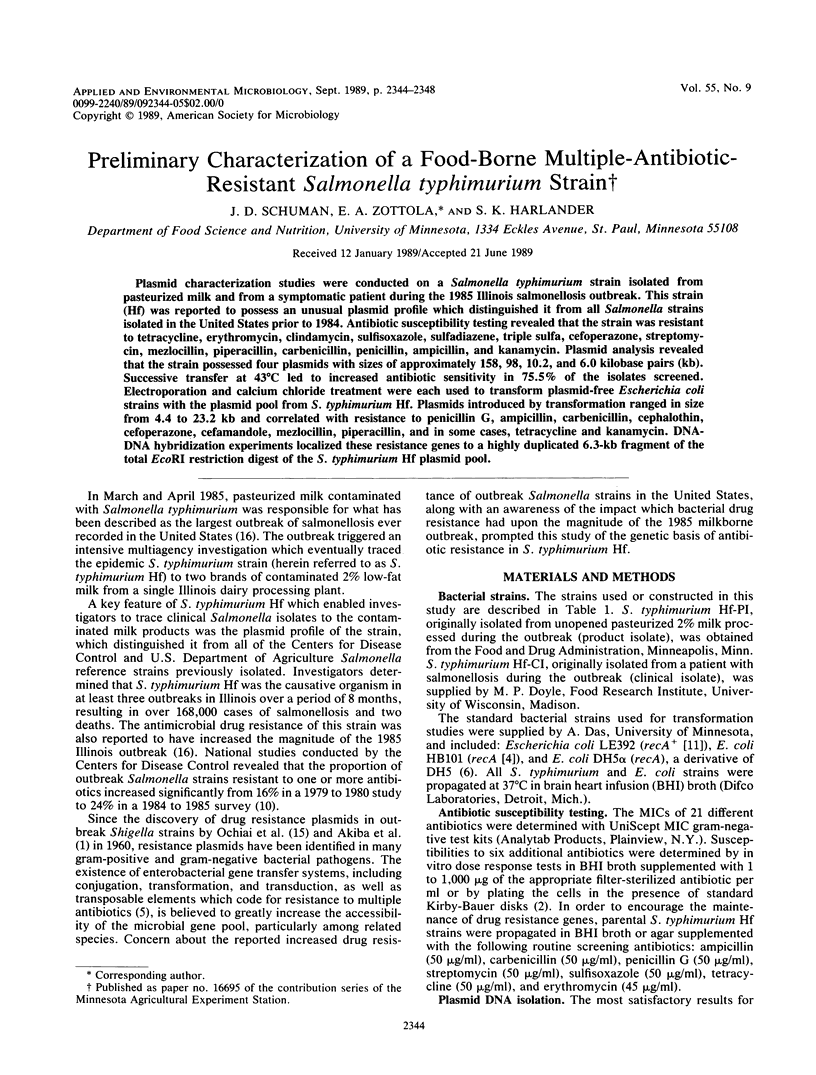
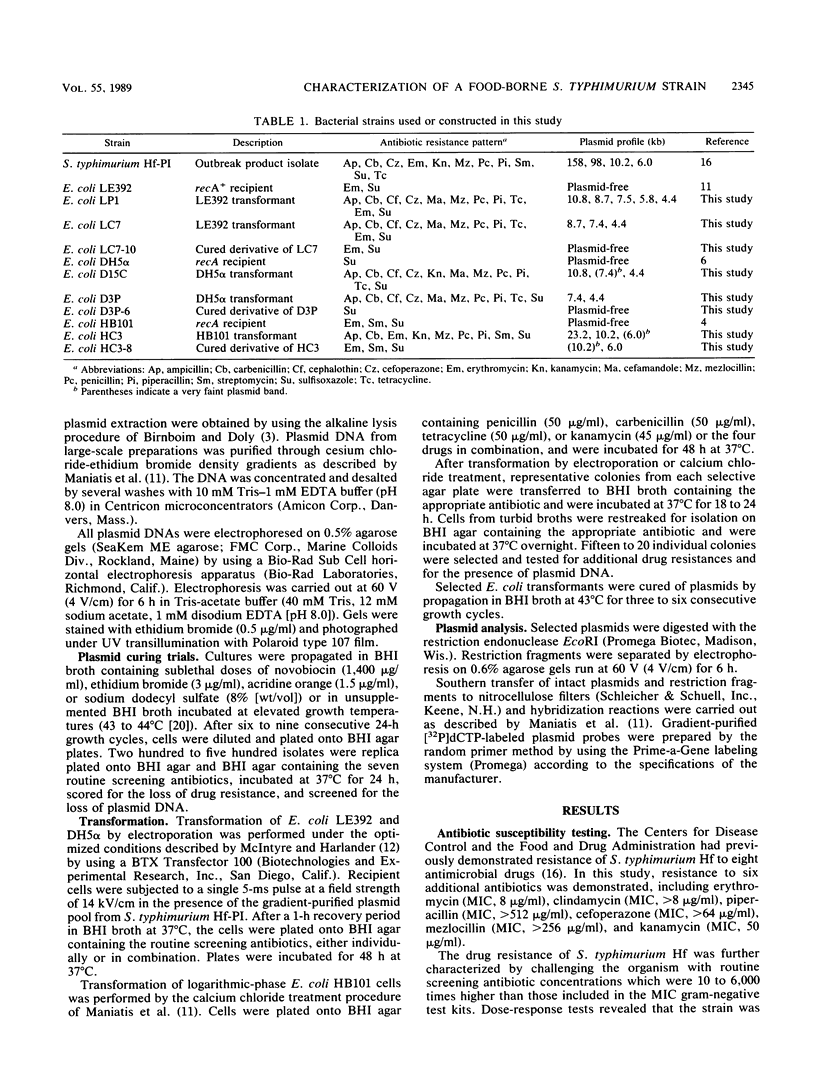
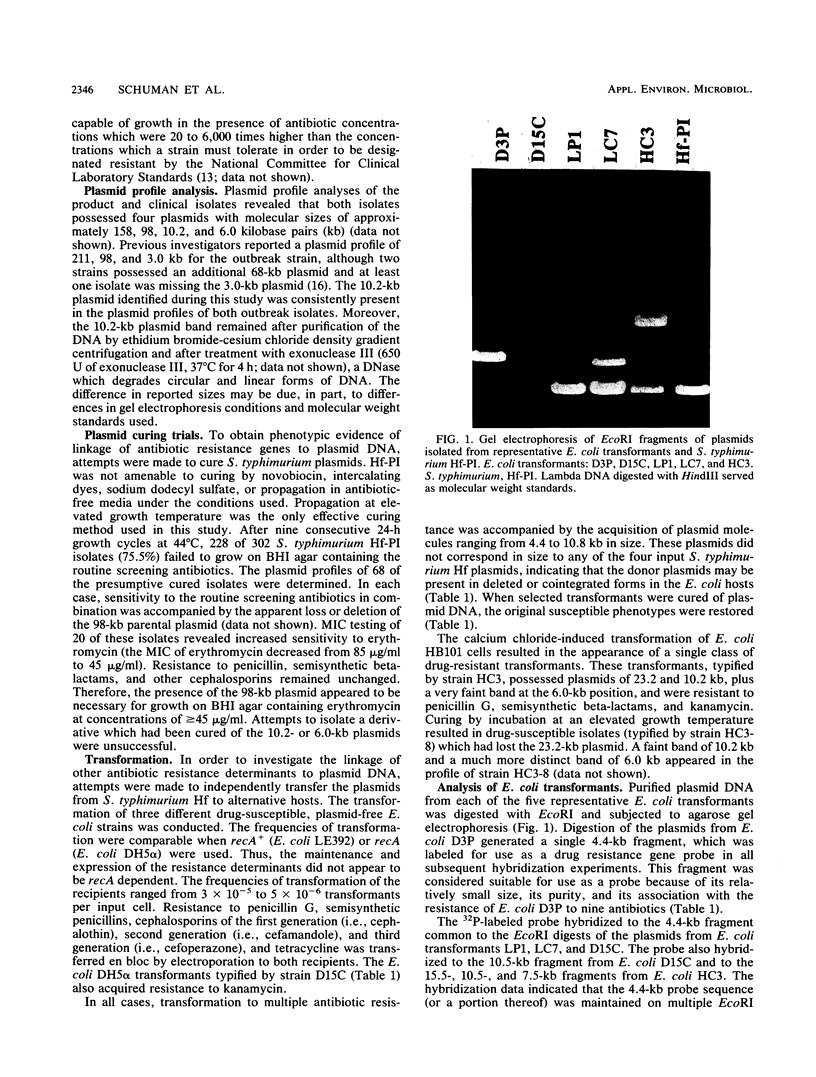
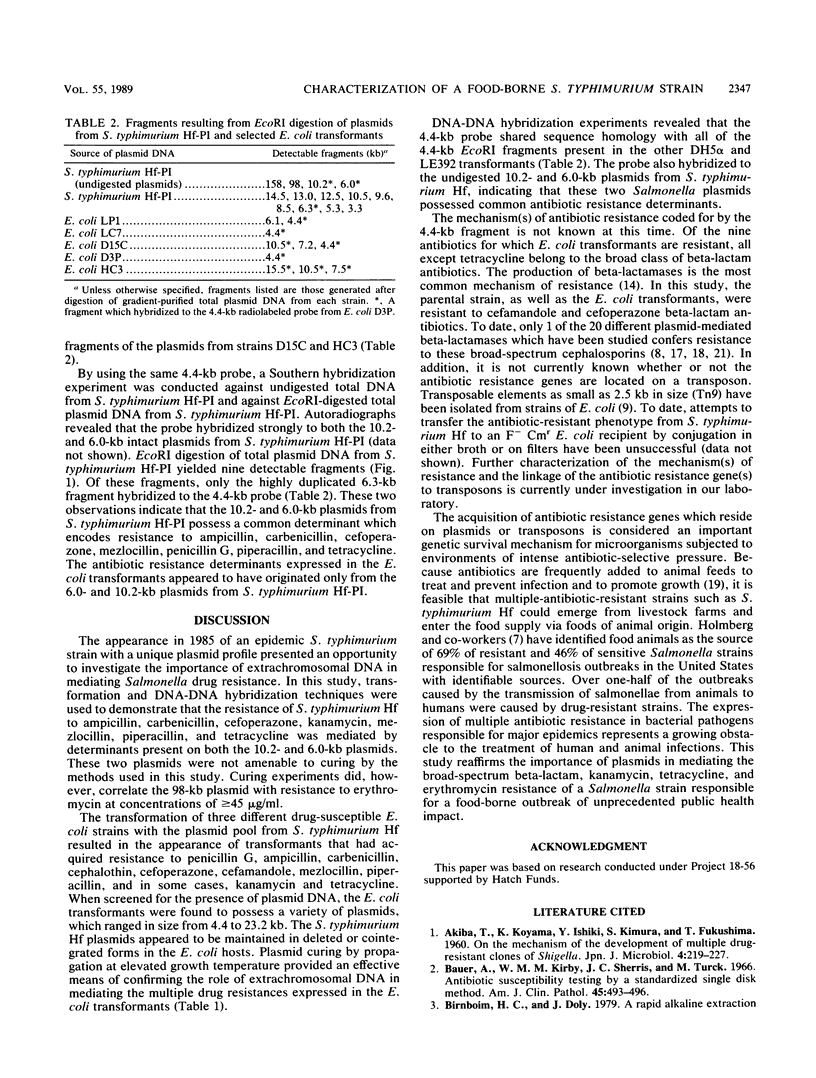
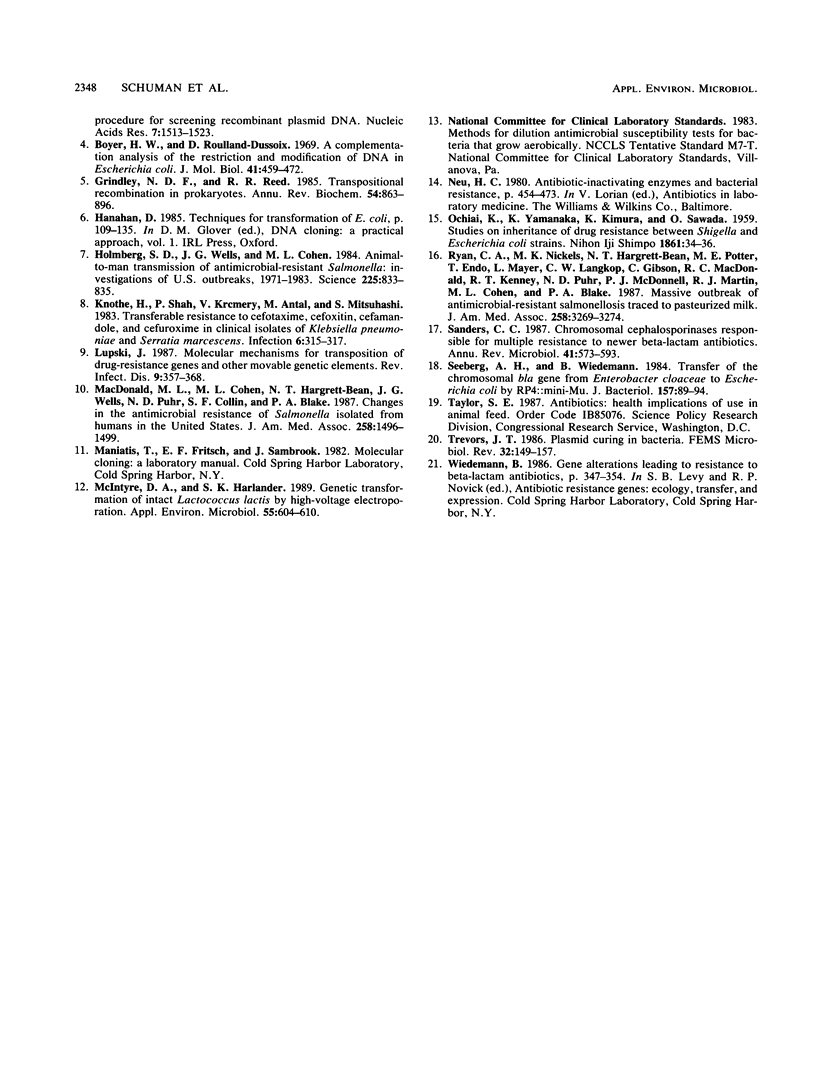
Images in this article
Selected References
These references are in PubMed. This may not be the complete list of references from this article.
- AKIBA T., KOYAMA K., ISHIKI Y., KIMURA S., FUKUSHIMA T. On the mechanism of the development of multiple-drug-resistant clones of Shigella. Jpn J Microbiol. 1960 Apr;4:219–227. doi: 10.1111/j.1348-0421.1960.tb00170.x. [DOI] [PubMed] [Google Scholar]
- Bauer A. W., Kirby W. M., Sherris J. C., Turck M. Antibiotic susceptibility testing by a standardized single disk method. Am J Clin Pathol. 1966 Apr;45(4):493–496. [PubMed] [Google Scholar]
- Boyer H. W., Roulland-Dussoix D. A complementation analysis of the restriction and modification of DNA in Escherichia coli. J Mol Biol. 1969 May 14;41(3):459–472. doi: 10.1016/0022-2836(69)90288-5. [DOI] [PubMed] [Google Scholar]
- Grindley N. D., Reed R. R. Transpositional recombination in prokaryotes. Annu Rev Biochem. 1985;54:863–896. doi: 10.1146/annurev.bi.54.070185.004243. [DOI] [PubMed] [Google Scholar]
- Holmberg S. D., Wells J. G., Cohen M. L. Animal-to-man transmission of antimicrobial-resistant Salmonella: investigations of U.S. outbreaks, 1971-1983. Science. 1984 Aug 24;225(4664):833–835. doi: 10.1126/science.6382605. [DOI] [PubMed] [Google Scholar]
- Knothe H., Shah P., Krcmery V., Antal M., Mitsuhashi S. Transferable resistance to cefotaxime, cefoxitin, cefamandole and cefuroxime in clinical isolates of Klebsiella pneumoniae and Serratia marcescens. Infection. 1983 Nov-Dec;11(6):315–317. doi: 10.1007/BF01641355. [DOI] [PubMed] [Google Scholar]
- Lupski J. R. Molecular mechanisms for transposition of drug-resistance genes and other movable genetic elements. Rev Infect Dis. 1987 Mar-Apr;9(2):357–368. doi: 10.1093/clinids/9.2.357. [DOI] [PubMed] [Google Scholar]
- MacDonald K. L., Cohen M. L., Hargrett-Bean N. T., Wells J. G., Puhr N. D., Collin S. F., Blake P. A. Changes in antimicrobial resistance of Salmonella isolated from humans in the United States. JAMA. 1987 Sep 18;258(11):1496–1499. [PubMed] [Google Scholar]
- McIntyre D. A., Harlander S. K. Genetic transformation of intact Lactococcus lactis subsp. lactis by high-voltage electroporation. Appl Environ Microbiol. 1989 Mar;55(3):604–610. doi: 10.1128/aem.55.3.604-610.1989. [DOI] [PMC free article] [PubMed] [Google Scholar]
- Ryan C. A., Nickels M. K., Hargrett-Bean N. T., Potter M. E., Endo T., Mayer L., Langkop C. W., Gibson C., McDonald R. C., Kenney R. T. Massive outbreak of antimicrobial-resistant salmonellosis traced to pasteurized milk. JAMA. 1987 Dec 11;258(22):3269–3274. [PubMed] [Google Scholar]
- Sanders C. C. Chromosomal cephalosporinases responsible for multiple resistance to newer beta-lactam antibiotics. Annu Rev Microbiol. 1987;41:573–593. doi: 10.1146/annurev.mi.41.100187.003041. [DOI] [PubMed] [Google Scholar]
- Seeberg A. H., Wiedemann B. Transfer of the chromosomal bla gene from Enterobacter cloacae to Escherichia coli by RP4::mini-Mu. J Bacteriol. 1984 Jan;157(1):89–94. doi: 10.1128/jb.157.1.89-94.1984. [DOI] [PMC free article] [PubMed] [Google Scholar]



